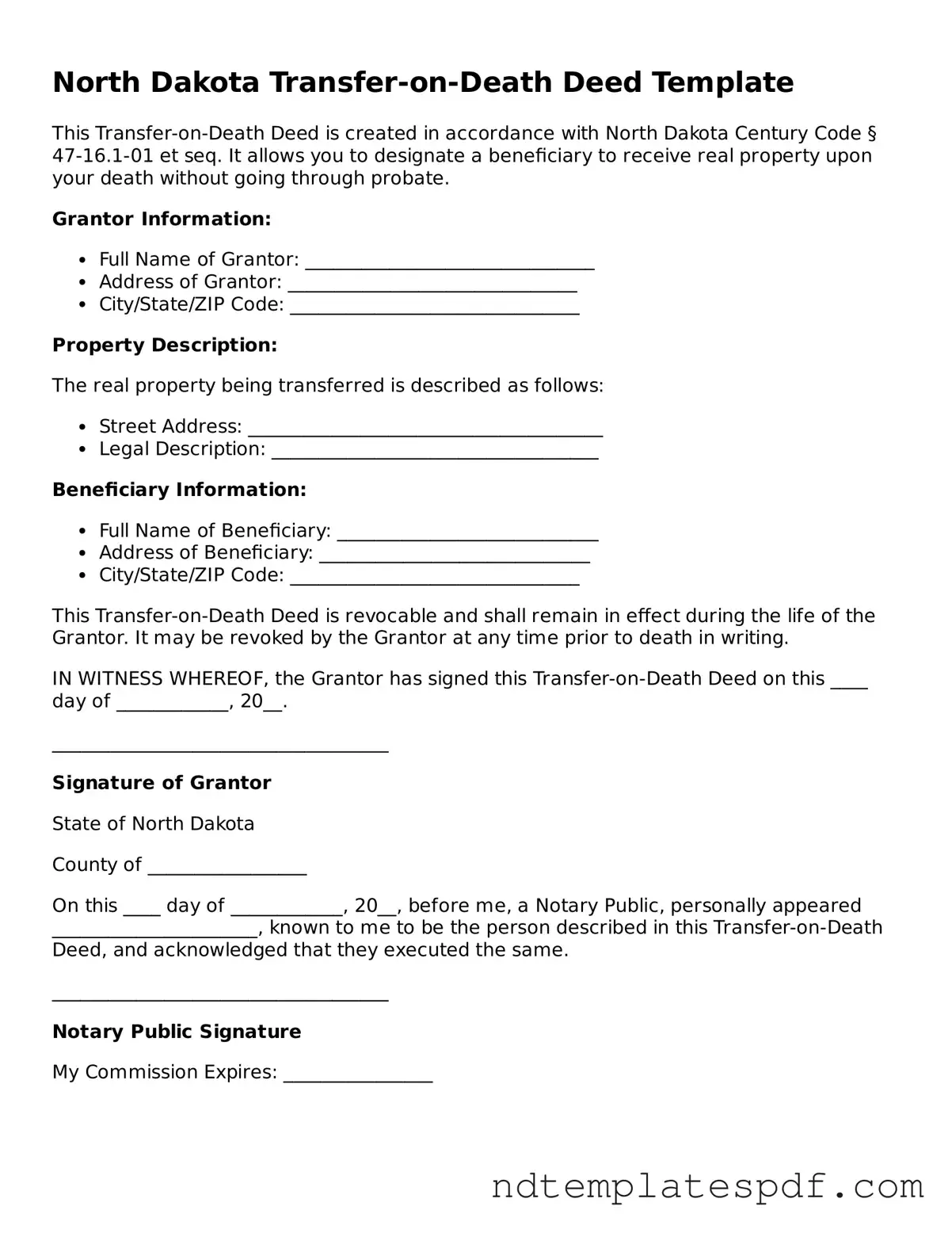Legal North Dakota Transfer-on-Death Deed Document
The North Dakota Transfer-on-Death Deed form is a legal document that allows individuals to transfer real estate to beneficiaries upon their death without the need for probate. This form provides a straightforward way to ensure that property is passed on according to one’s wishes. By using this deed, property owners can maintain control during their lifetime while simplifying the transfer process for their heirs.
Fill Out Document Now
